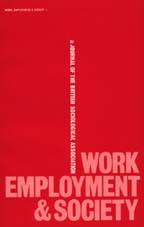Article contents
Reworking Sex Work
Published online by Cambridge University Press: 01 June 2000
Abstract
Julia O'Connell Davidson, Prostitution, Power and Freedom, Cambridge: Polity Press, 1998, £45, paper £13.95, viii+232 pp.
Lin Lean Lim (ed.), The Sex Sector: the Economic and Social bases of Prostitution in Southeast Asia, Geneva: International Labour Organisation, 1998, £19.00 paper, xiii+232 pp.
The huge expansion of the sex industry and corresponding growth of sex worker collectives on a global scale demand new directions in research. Both these books make an invaluable contribution by moving away from sociological preoccupations with identity and by addressing the issues of sex tourism and child prostitution as special cases of more general developments. Both also foreground the economics of prostitution. However, their conceptualisation of this is very different and in other respects too they could not be more dissimilar. One of O'Connell Davidson's main targets is radical feminism, as well as liberal sex workers discourse, yet in bringing marxism and other paradigms to bear on both, she produces an even more powerful indictment of prostitution. Her conceptual rigour is comparable to Truong (1990) but she actually focuses much more directly on prostitute–client transactions and the dynamics of male power than on the political economy and state in which they are embedded. Though her study is based on extensive empirical work in the UK, Southeast Asia and the Caribbean, the research is used to elaborate the theoretical argument (cf. Shrage 1994) rather than being the object of analysis. In Lim's survey, by contrast, the comparative data is central to a comprehensive review of prostitution in Southeast Asia. While it lacks theoretical depth, its strengths are empirical detail and the way it highlights similarities and differences within four economies. It steers an intelligent path through the maze of highly charged debates on trafficking and child prostitution, paralleling some of the work being done by sex work activists (Kempadoo and Doezema 1998). Commissioned by the ILO, the survey is also itself symptomatic of a growing international recognition of prostitution as work.
- Type
- EXTENDED REVIEW
- Information
- Copyright
- © 2000 BSA Publications Ltd
- 2
- Cited by


